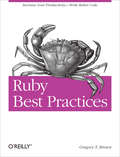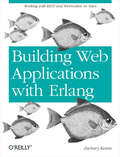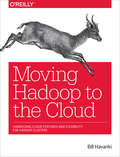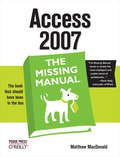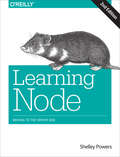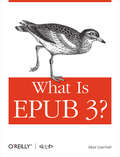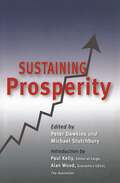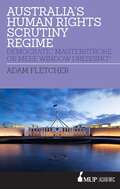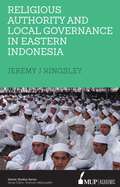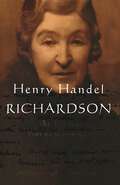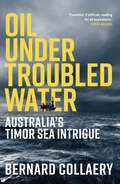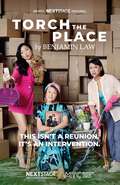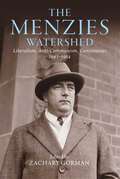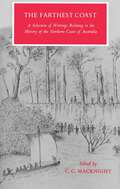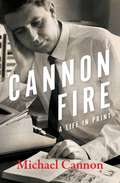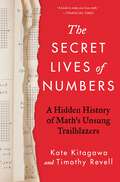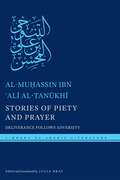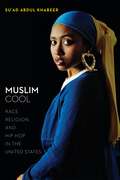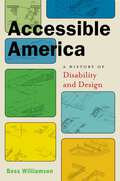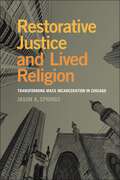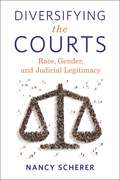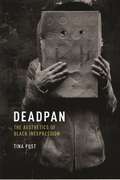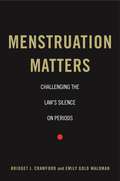- Table View
- List View
Ruby Best Practices: Increase Your Productivity - Write Better Code
by Gregory T BrownHow do you write truly elegant code with Ruby? Ruby Best Practices is for programmers who want to use Ruby as experienced Rubyists do. Written by the developer of the Ruby project Prawn, this concise book explains how to design beautiful APIs and domain-specific languages with Ruby, as well as how to work with functional programming ideas and techniques that can simplify your code and make you more productive. You'll learn how to write code that's readable, expressive, and much more. Ruby Best Practices will help you:Understand the secret powers unlocked by Ruby's code blocksLearn how to bend Ruby code without breaking it, such as mixing in modules on the flyDiscover the ins and outs of testing and debugging, and how to design for testabilityLearn to write faster code by keeping things simpleDevelop strategies for text processing and file management, including regular expressionsUnderstand how and why things can go wrongReduce cultural barriers by leveraging Ruby's multilingual capabilitiesThis book also offers you comprehensive chapters on driving code through tests, designing APIs, and project maintenance. Learn how to make the most of this rich, beautiful language with Ruby Best Practices.
Building Web Applications with Erlang: Working with REST and Web Sockets on Yaws
by Zachary KessinWhy choose Erlang for web applications? Discover the answer hands-on by building a simple web service with this book. If you’re an experienced web developer who knows basic Erlang, you’ll learn how to work with REST, dynamic content, web sockets, and concurrency through several examples. In the process, you’ll see first-hand that Erlang is ideal for building business-critical services.Erlang was designed for fault-tolerant, non-stop telecom systems, and building applications with it requires a large set of skills. By the end of the book, you’ll have the information you need to build a basic web service and get it running.Explore the power of Erlang and REST for building web servicesServe static and dynamic content with the Yaws web serverUse different methods for outputting data to user, such as encoding Erlang data structures into JSON or XMLBuild an application to listen for HTTP requests, process them, store data, and return useful dataGo beyond the request-response model—push data to clients with web socketsUse Erlang and Yaws to stream data from the server to a client"A book which is truly needed and will help get Erlang to the next level."—Francesco Cesarini, CEO of Erlang Solutions, author of Erlang Programming.
Moving Hadoop to the Cloud: Harnessing Cloud Features and Flexibility for Hadoop Clusters
by Bill HavankiUntil recently, Hadoop deployments existed on hardware owned and run by organizations. Now, of course, you can acquire the computing resources and network connectivity to run Hadoop clusters in the cloud. But there’s a lot more to deploying Hadoop to the public cloud than simply renting machines.This hands-on guide shows developers and systems administrators familiar with Hadoop how to install, use, and manage cloud-born clusters efficiently. You’ll learn how to architect clusters that work with cloud-provider features—not just to avoid pitfalls, but also to take full advantage of these services. You’ll also compare the Amazon, Google, and Microsoft clouds, and learn how to set up clusters in each of them.Learn how Hadoop clusters run in the cloud, the problems they can help you solve, and their potential drawbacksExamine the common concepts of cloud providers, including compute capabilities, networking and security, and storageBuild a functional Hadoop cluster on cloud infrastructure, and learn what the major providers requireExplore use cases for high availability, relational data with Hive, and complex analytics with SparkGet patterns and practices for running cloud clusters, from designing for price and security to dealing with maintenance
Access 2007: The Missing Manual (Missing Manual)
by Matthew MacDonaldCompared to industrial-strength database products such as Microsoft's SQL Server, Access is a breeze to use. It runs on PCs rather than servers and is ideal for small- to mid-sized businesses and households. But Access is still intimidating to learn. It doesn't help that each new version crammed in yet another set of features; so many, in fact, that even the pros don't know where to find them all. Access 2007 breaks this pattern with some of the most dramatic changes users have seen since Office 95. Most obvious is the thoroughly redesigned user interface, with its tabbed toolbar (or "Ribbon") that makes features easy to locate and use. The features list also includes several long-awaited changes. One thing that hasn't improved is Microsoft's documentation. To learn the ins and outs of all the features in Access 2007, Microsoft merely offers online help.Access 2007: The Missing Manual was written from the ground up for this redesigned application. You will learn how to design complete databases, maintain them, search for valuable nuggets of information, and build attractive forms for quick-and-easy data entry. You'll even delve into the black art of Access programming (including macros and Visual Basic), and pick up valuable tricks and techniques to automate common tasks -- even if you've never touched a line of code before. You will also learn all about the new prebuilt databases you can customize to fit your needs, and how the new complex data feature will simplify your life. With plenty of downloadable examples, this objective and witty book will turn an Access neophyte into a true master.
Learning Node: Moving to the Server-Side
by Shelley PowersTake your web development skills from browser to server with Node—and learn how to write fast, highly scalable network applications on this JavaScript-based platform. Updated for the latest Node Long Term Support (LTS) and Node Current (6.0) releases, this hands-on edition helps you master Node’s core fundamentals and gain experience with several built-in and contributed modules.Get up to speed on Node’s event-driven, asynchronous I/O model for developing data-intensive applications that are frequently accessed but computationally simple. If you’re comfortable working with JavaScript, this book provides many programming and deployment examples to help you take advantage of server-side development with Node.Explore the frameworks and functionality for full-stack Node developmentDive into Node’s module system and package management supportTest your application or module code on the fly with Node’s REPL consoleUse core Node modules to build web applications and an HTTP serverLearn Node’s support for networks, security, and socketsAccess operating system functionality with child processesLearn tools and techniques for Node development and productionUse Node in microcontrollers, microcomputers, and the Internet of Things
What is EPUB 3?
by Matt GarrishThis book discusses the exciting new format that is set to unleash a content revolution in the publishing world. Laden with features the printed page could never offer--such as embedded multimedia and scripted interactivity--EPUB 3 will forever change what a book can be. This article walks you through the format and puts it in its place in the digital landscape, explaining why EPUB 3 is set to become the new global standard for ebooks as it also becomes the new accessible standard for ebooks.
Sustaining Prosperity
by Peter Dawkins Michael StutchburyWhere are the new reform opportunities to ensure economic expansion? How should we face the challenges of an ageing population? How will we spread prosperity to the areas of entrenched disadvantage? These questions were the focus of the Sustaining Prosperity conference, hosted by the Melbourne Institute of Applied Economic and Social Research and The Australian in March-April 2005 at the University of Melbourne. A unique gathering of government ministers, opposition spokespeople, academic experts and business, social welfare and trade union figures debated a new national reform agenda to sustain prosperity. Participants included Federal Treasurer Peter Costello, federal Opposition Leader Kim Beazley, federal Treasury Secretary Ken Henry, economist Ross Garnaut, ACTU secretary Greg Combet and Australian Council of Social Service president Andrew McCallum. In Sustaining Prosperity, Peter Dawkins and Michael Stutchbury bring together the contributions of these and other leading Australians to examine the development of policies that will ensure a prosperous future for Australia.
Australia's Human Rights Scrutiny Regime: Democratic Masterstroke or Mere Window Dressing?
by Adam FletcherIn 2010 the Australian Government decided that it would not propose a Human Rights Act, despite the relevant recommendation of the 2008-09 National Human Rights Consultation. Instead, it introduced a Human Rights Framework comprising several measures to enhance human rights protection, including theHuman Rights (Parliamentary Scrutiny) Act 2011. The scrutiny regime under that Act was designed to ensure rights would be given due consideration before Commonwealth legislation was passed. The Act created a unique 'bipartite dialogue' system, involving a formal interchange on rights compatibility between the executive and Parliament, while excluding the courts. This set the Commonwealth apart from jurisdictions such as the ACT, Victoria, New Zealand and the UK, which have statutory rights instruments administered by their courts. The book presents a detailed study of all aspects of the scrutiny regime, and compares the regime with its closest counterparts overseas. In assessing the regime's impact, it argues that a system in which the executive and Parliament are responsible both for protecting rights and for remedying rights breaches is neither more legitimate nor more effective than one involving all three branches of government. Accordingly, it calls for strengthening reforms.
Religious Authority and Local Governance in Eastern Indonesia
by Jeremy J KingsleyReligion plays a key role in everyday affairs in Indonesia—including governance at the local, regional and national level. This book investigates the local governance landscape of the world's largest Muslim majority state, Indonesia, by providing a detailed account of local communities and religious authority on the eastern Indonesian island of Lombok—one of the nation's most pious areas. In particular, this book considers the interaction of state and non-state actors and institutions and how these institutions are interwoven into a fabric of governance. Through an ethnographic case study of an Islamic boarding school, Darul Falah, and the community committed to it, this book trains its focus upon local Muslim religious leaders (Tuan Guru) who are central to local governance. Drawing upon the notion of the fabric of governance, this book shows how governance is woven from multiple strands, which are made up of a combination of institutions, rules and actors to be interpreted within dynamic social, legal and political processes. In doing so, this book employs a new means to theorise governance frameworks and understand how religion and governance are tightly intertwined. Religious Authority and Local Governance in Eastern Indonesia seeks to re-orient discussions of Indonesian political and legal affairs from the ground up and use local governance as a means to speak to larger social, legal and political issues. Islamic Studies Series - Volume 25
Henry Handel Richardson Vol 3: 1934-1946
by Edited By SteeleThe publication of Henry Handel Richardson's correspondence is a major event in Australian scholarly publishing. There are approximately fifteen hundred unpublished manuscript letters to and from HHR, of which almost a thousand are in her own hand. They form a correspondence between Australia, England, Germany, Italy and the USA over a seventy-year period, 1874 to 1946. The letters shed new light on Henry Handel Richardson's biography, her artistic methods, her personal life, her friendships (and antagonisms), her response to Australian readers and to expatriation, and her rigorous efforts to maintain a literary life apart from her personal life. The collection begins with HHR's earliest letter, then traces her student days in Leipzig, the publication of Maurice Guest, The Getting of Wisdom, The Fortunes of Richard Mahony, The Young Cosima and The End of a Childhood, and her struggle late in life with the stringencies of wartime England. In this volume the widowed HHR moves to the Sussex village where she lived until her death. The letters cover the publication of The End of a Childhood and Other Stories, the ill-fated The Young Cosima and her incomplete memoir Myself When Young. War dominated the closing years of her life, and she reported her experiences graphically to Mary Kernot. She refused to leave her house, even while the Battle of Britain was being fought in the skies above her. The strain and deprivations of war weakened her. When unable to write, her companion and secretary Olga Roncoroni wrote for her, and these letters are included. Her last letter is a little pencilled note to Mary Kernot.
Oil Under Troubled Water: Australia's Timor Sea Intrigue
by Bernard CollaeryIn May 2018 Bernard Collaery, a former Attorney-General of the Australian Capital Territory and long-term legal counsel to the government of East Timor, was charged by the Australian Commonwealth Director of Public Prosecutions with conspiracy to breach the Intelligence Services Act 2001. He was forbidden from talking about the charges against him, but under parliamentary privilege independent MP Andrew Wilkie revealed what has since been described as 'Australian politics' biggest scandal'. Five years earlier, after ASIO officers raided Collaery's home and office, Collaery told journalists that ASIS had been bugging the East Timorese government during negotiations over Timor Sea oil. He was about to represent East Timor; as well as calling the evidence of a former senior ASIS agent known publicly only as Witness K, at The Hague in a case against the Australian government. Oil Under Troubled Water relates the sordid history of Australian government dealings with East Timor, and how the actions of both major political parties have enriched Australia and its corporate allies at the expense of its tiny neighbour and wartime ally, one of the poorest nations in the world.
Torch the Place: MTC NEXTSTAGE ORIGINAL
by Benjamin LawTeresa's mum finds it impossible to let anything go-from grudges to household objects. She thinks of her home as a museum full of irreplaceable treasures. But she's not really a curator, she's a hoarder, and her house is enough to give Marie Kondo heart palpitations. When her kids return home to celebrate her 60th birthday, she's over the moon to have the family back together. But this isn't a reunion. It's an intervention. Celebrated writer Benjamin Law is one of this country's brightest literary stars. For his hysterically funny and moving stage premiere, Law employs his effortless self-deprecating wit to spark joy in the clutter and find truth in those crazy moments that bring families closer together. Commissioned through MTC's NEXT STAGE Writers' Program with the support of our Playwrights Giving Circle Donors, The Ian Potter Foundation, Naomi Milgrom Foundation, The Myer Foundation, Malcolm Robertson Foundation and The University of Melbourne.
Menzies Watershed: Liberalism, Anti-communism, Continuities 1943–1954
by Zachary GormanThe eleven years that passed between the 1943 and the 1954 elections were arguably some of the most pivotal in Australian history. This was a period of intense political, policy and strategic transition, which saw a popular Labor Government and its state-led vision for post-war reconstruction toppled by Robert Menzies and his newly formed political machine, the Liberal Party of Australia. Meanwhile, a backdrop of rising Cold War tensions came to dominate domestic and international policymaking, ushering in a divisive communist party ban, the ANZUS treaty, the Colombo Plan, and Australia's own agency of international espionage, ASIS. But what was the difference in practical terms between Menzies and his predecessors? What role was the state to play under a centre-right government, and would Menzies be able to live up to the liberal ideals with which he had won over the Australian public? All these issues are explored in the second of a four-volume history of Menzies and his world, based on conferences convened by the Robert Menzies Institute at the University of Melbourne. Contributors include Christopher Beer, Andrew Blyth, Troy Bramston, Lorraine Finlay, Nicolle Flint, David Furse-Roberts, Anne Henderson, David Lee, Lucas McLennan, Lyndon Megarrity, Charles Richardson, William Stoltz and Tom Switzer.
Farthest Coast: A Selection of Writings Relating to the History of the Northern Coast of Australia
by Campbell MacknightNorthern Australia was once one the most remote areas of the world. To all its early visitors—Macassan fishermen, white explorers, soldiers, government officials, settlers and missionaries—it was their farthest coast. For all it was an alien and difficult place to reach.Campbell Macknight outlines the history of the exploration and settlement of the coast from the Gulf of Carpentaria west to the Kimberleys in his introduction. He suggest it is a geographical unit very different from the rest of Australia.His selections from the writings of early visitors are exciting and interesting for their own sakes, and an invaluable guide to a region of growing economic and strategic importance.
Cannon Fire: A Life in Print
by Michael CannonMichael Cannon is best known as the author of landmark and popular works of Australian history, including The Land Boomers (1966), and as the founding editor of Historical Records of Victoria. But Cannon, the child and grandchild of important figures in Australian independent journalism, developed a fascination with print media early in his life and had a long and colourful career in printing, publishing and editing books, newspapers and magazines. In Cannon Fire he brings to life many notable personalities with whom he worked, including Keith and Rupert Murdoch, and recreates the ink-stained, cigarette-smoke-filled and always well-lubricated worlds of publishing across Melbourne and Sydney in the second half of the twentieth century. More than this, Cannon's intimate account of a life that began in the 1920s fascinates as both a personal story of unusual courage in the face of challenge and heartache, and as a tale of times now passing from memory.
The Secret Lives of Numbers: A Hidden History of Math's Unsung Trailblazers
by Kate Kitagawa Timothy RevellShortlisted for the 2024 British Academy Book PrizeA new history of mathematics focusing on the marginalized voices who propelled the discipline, spanning six continents and thousands of years of untold stories."A book to make you love math." —Financial TimesMathematics shapes almost everything we do. But despite its reputation as the study of fundamental truths, the stories we have been told about it are wrong—warped like the sixteenth-century map that enlarged Europe at the expense of Africa, Asia and the Americas. In The Secret Lives of Numbers, renowned math historian Kate Kitagawa and journalist Timothy Revell make the case that the history of math is infinitely deeper, broader, and richer than the narrative we think we know.Our story takes us from Hypatia, the first great female mathematician, whose ideas revolutionized geometry and who was killed for them—to Karen Uhlenbeck, the first woman to win the Abel Prize, “math’s Nobel.” Along the way we travel the globe to meet the brilliant Arabic scholars of the “House of Wisdom,” a math temple whose destruction in the Siege of Baghdad in the thirteenth century was a loss arguably on par with that of the Library of Alexandria; Madhava of Sangamagrama, the fourteenth-century Indian genius who uncovered the central tenets of calculus 300 years before Isaac Newton was born; and the Black mathematicians of the Civil Rights era, who played a significant role in dismantling early data-based methods of racial discrimination.Covering thousands of years, six continents, and just about every mathematical discipline, The Secret Lives of Numbers is an immensely compelling narrative history.
Jacques Pépin Cooking My Way: Recipes and Techniques for Economical Cooking
by Jacques PépinMaster chef Jacques Pépin shares his expert insights on cooking economically at home—how to save money, time, and effort—in Jacques Pépin Cooking My Way, with over 150 recipes. All great chefs know not to waste ingredients, time, or effort—and for master chef Jacques Pépin, this means thinking efficiently about cooking, even at home. In Jacques Pépin Cooking My Way, the legendary cooking teacher offers expert insights on cooking economically at home, with techniques that save money, time, and cleanup effort, without sacrificing taste. Shop for ingredients seasonally when they’re the most affordable, flavorful, and full of nutrition. Don’t overlook inexpensive cuts of meat and poultry. Use up as much of your ingredients up as possible, like saving your meat and vegetable trimmings for a stock, soup, or eventually, a sauce. Transform leftovers into an entirely new, pleasurable meal. With more than 150 recipes, along with an illustrated menu for each season, Jacques Pépin Cooking My Way equips you with everything you need to cook the way Jacques Pépin does. Recipes include:Garlicky Romaine with CroutonsGrits and Cheese SouffléBlack-Eyed Peas and Kale RagoutSkillet Butternut SquashZucchini-Tomato GratinBaked Salmon with Pesto ButterClam FrittersScaloppine of Turkey Breast in Mushroom Cream SauceStrawberries with Sour Cream and Brown SugarThis beautifully revised, updated, and completely repackaged edition of Pépin Economique is an instant classic and a necessity for any home cook looking to make high-quality dishes with minimal time, effort, and money, now with full-color photographs and Jacques’ celebrated paintings.
Stories of Piety and Prayer: Deliverance Follows Adversity (Library of Arabic Literature #35)
by al-Muḥassin ibn al-TanūkhīUplifting tales from one of the most influential Arabic books of the Middle AgesOne of the most popular and influential Arabic books of the Middle Ages, Deliverance Follows Adversity is an anthology of stories and anecdotes designed to console and encourage the afflicted. Regarded as a pattern-book of Arabic storytelling, this collection shows how God’s providence works through His creatures to rescue them from tribulations ranging from religious persecution and medical emergencies to political skullduggery and romantic woes. A resident of Basra and Baghdad, al-Tanukhi (327–84/939–94) draws from earlier Arabic classics as well as from oral stories relayed by the author’s tenth-century Iraqi contemporaries, who comprised a wide circle of writers, intellectuals, judges, government officials, and family members. This edition and translation includes the first three chapters of the work, which deal with Qur'anic stories and prayers that bring about deliverance, as well as general instances of the workings of providence. The volume incorporates material from manuscripts not used in the standard Arabic edition, and is the first translation into English. The complete translation, spanning four volumes, will be the first integral translation into any European language.A bilingual Arabic-English edition.
Muslim Cool: Race, Religion, and Hip Hop in the United States
by Su'ad Abdul KhabeerInterviews with young Muslims in Chicago explore the complexity of identities formed at the crossroads of Islam and hip hopThis groundbreaking study of race, religion and popular culture in the 21st century United States focuses on a new concept, “Muslim Cool.” Muslim Cool is a way of being an American Muslim—displayed in ideas, dress, social activism in the ’hood, and in complex relationships to state power. Constructed through hip hop and the performance of Blackness, Muslim Cool is a way of engaging with the Black American experience by both Black and non-Black young Muslims that challenges racist norms in the U.S. as well as dominant ethnic and religious structures within American Muslim communities. Drawing on over two years of ethnographic research, Su'ad Abdul Khabeer illuminates the ways in which young and multiethnic US Muslims draw on Blackness to construct their identities as Muslims. This is a form of critical Muslim self-making that builds on interconnections and intersections, rather than divisions between “Black” and “Muslim.” Thus, by countering the notion that Blackness and the Muslim experience are fundamentally different, Muslim Cool poses a critical challenge to dominant ideas that Muslims are “foreign” to the United States and puts Blackness at the center of the study of American Islam. Yet Muslim Cool also demonstrates that connections to Blackness made through hip hop are critical and contested—critical because they push back against the pervasive phenomenon of anti-Blackness and contested because questions of race, class, gender, and nationality continue to complicate self-making in the United States.
Accessible America: A History of Disability and Design (Crip #2)
by Bess WilliamsonA history of design that is often overlooked—until we need itHave you ever hit the big blue button to activate automatic doors? Have you ever used an ergonomic kitchen tool? Have you ever used curb cuts to roll a stroller across an intersection? If you have, then you’ve benefited from accessible design—design for people with physical, sensory, and cognitive disabilities. These ubiquitous touchstones of modern life were once anything but. Disability advocates fought tirelessly to ensure that the needs of people with disabilities became a standard part of public design thinking. That fight took many forms worldwide, but in the United States it became a civil rights issue; activists used design to make an argument about the place of people with disabilities in public life.In the aftermath of World War II, with injured veterans returning home and the polio epidemic reaching the Oval Office, the needs of people with disabilities came forcibly into the public eye as they never had before. The US became the first country to enact federal accessibility laws, beginning with the Architectural Barriers Act in 1968 and continuing through the landmark Americans with Disabilities Act in 1990, bringing about a wholesale rethinking of our built environment. This progression wasn’t straightforward or easy. Early legislation and design efforts were often haphazard or poorly implemented, with decidedly mixed results. Political resistance to accommodating the needs of people with disabilities was strong; so, too, was resistance among architectural and industrial designers, for whom accessible design wasn’t “real” design.Bess Williamson provides an extraordinary look at everyday design, marrying accessibility with aesthetic, to provide an insight into a world in which we are all active participants, but often passive onlookers. Richly detailed, with stories of politics and innovation, Williamson’s Accessible America takes us through this important history, showing how American ideas of individualism and rights came to shape the material world, often with unexpected consequences.
Restorative Justice and Lived Religion: Transforming Mass Incarceration in Chicago (Religion and Social Transformation)
by Jason A. SpringsFrames restorative justice as a form of moral and spiritual practice with the capacity to transform injusticeIn the United States “restorative justice” typically refers to small-scale measures that divert alleged wrongdoers from a standard path through the criminal justice system by funneling them into alternative justice programs. These aim not to punish the offender, but to constructively address the harm that wrongdoing may have caused to individuals or to the community, engaging with the wrongdoer to come to a response that might heal and repair the harm.Yet restorative justice initiatives generally fail to challenge and transform the racist system of mass incarceration. This book argues that these initiatives have the potential to do so, but that we need to better understand what restorative justice is, and how it should be implemented. It claims that restorative justice can achieve its desired effect only insofar as it provides a mode of association between people that is, at its core, moral and spiritual. The book explores the ways in which restorative justice ethics and practices exhibit moral and spiritual dynamics, and what difference such “lived religious” dynamics can make for purposes of transforming structural violence.Looking to Chicago’s restorative justice network as a model for developing these transformational and sustainable social changes, the volume showcases real-life examples of the kinds of practices and initiatives needed to shift the entrenched dynamics that fuel the prison-industrial complex across the United States.
Diversifying the Courts: Race, Gender, and Judicial Legitimacy
by Nancy SchererExamines the decisions of US presidents to appoint judges from diverse backgrounds to federal courtsIn Diversifying the Courts, Nancy Scherer addresses why presidents choose—or don’t choose—to diversify the federal courts by race, ethnicity, and gender. She explores how and why the issue became a bitter partisan fight in the first place, tracking the controversial history—and politics—of court diversification.Drawing on polls, political experiments, surveys and one-on-one interviews, Scherer illuminates the complicated relationship between diversity and court legitimacy. She shows us how diverse representation can positively impact perceptions of the court among women and racial minorities, while having a negative impact on the perceptions among white people and men. Ultimately, Diversifying the Courts provides insight into the impact of gender, race, and ethnicity on the courts, illuminating some of the major challenges facing the American judicial system in the years that lie ahead.
Deadpan: The Aesthetics of Black Inexpression (Minoritarian Aesthetics #1)
by Tina PostWinner of the 2023 National Book Critics Circle Award for CriticismWinner of the 2023 ASAP Book Prize, given by the Association for the Study of the Arts of the PresentExplores expressionlessness, inscrutability, and emotional withholding in Black cultural productionArguing that inexpression is a gesture that acquires distinctive meanings in concert with blackness, Deadpan tracks instances and meanings of deadpan—a vaudeville term meaning “dead face”—across literature, theater, visual and performance art, and the performance of self in everyday life.Tina Post reveals that the performance of purposeful withholding is a critical tool in the work of black culture makers, intervening in the persistent framing of African American aesthetics as colorful, loud, humorous, and excessive. Beginning with the expressionless faces of mid-twentieth-century documentary photography and proceeding to early twenty-first-century drama, this project examines performances of blackness’s deadpan aesthetic within and beyond black embodiments, including Young Jean Lee’s The Shipment and Branden Jacobs-Jenkins’s Neighbors, as well as Buster Keaton’s signature character and Steve McQueen’s restitution of the former’s legacy within the continuum of Black cultural production. Through this varied archive, Post reveals how deadpan aesthetics function in and between opacity and fugitivity, minimalism and saturation, excess and insensibility.
Menstruation Matters: Challenging the Law's Silence on Periods
by Bridget J. Crawford Emily Gold WaldmanExplores the burgeoning menstrual advocacy movement and analyzes how law should evolve to take menstruation into account.Approximately half the population menstruates for a large portion of their lives, but the law is mostly silent about the topic. Until recently, most people would have said that periods are private matters not to be discussed in public. But the last few years have seen a new willingness among advocates and allies of all ages to speak openly about periods. Slowly around the globe, people are recognizing the basic fundamental human right to address menstruation in a safe and affordable way, free of stigma, shame, or barriers to access.Menstruation Matters explores the role of law in this movement. It asks what the law currently says about menstruation (spoiler alert: not much) and provides a roadmap for legal reform that can move society closer to a world where no one is held back or disadvantaged by menstruation. Bridget J. Crawford and Emily Gold Waldman examine these issues in a wide range of contexts, from schools to workplaces to prisons to tax policies and more. Ultimately, they seek to transform both law and society so that menstruation is no longer an obstacle to full participation in all aspects of public and private life.
Fees Must Fall: Student revolt, decolonisation and governance in South Africa
by Susan BooysenThis book explores the student discontent a year after the start of the 2015 South African #FeesMustFall revolt#FeesMustFall, the student revolt that began in October 2015, was an uprising against lack of access to, and financial exclusion from, higher education in South Africa. More broadly, it radically questioned the socio-political dispensation resulting from the 1994 social pact between big business, the ruling elite and the liberation movement. The 2015 revolt links to national and international youth struggles of the recent past and is informed by black consciousness politics and social movements of the international left. Yet, its objectives are more complex than those of earlier struggles. The student movement has challenged the hierarchical, top-down leadership system of university management and it’s ‘double speak’ of professing to act in workers’ and students’ interests yet entrenching a regressive system for control and governance. University managements, while on one level amenable to change, have also co-opted students into their ranks to create co-responsibility for the highly bureaucratised university financial aid that stands in the way of their social revolution. This book maps the contours of student discontent a year after the start of the #FeesMustFall revolt. Student voices dissect colonialism, improper compromises by the founders of democratic South Africa, feminism, worker rights and meaningful education. In-depth assessments by prominent scholars reflect on the complexities of student activism, its impact on national and university governance, and offer provocative analyses of the power of the revolt.
